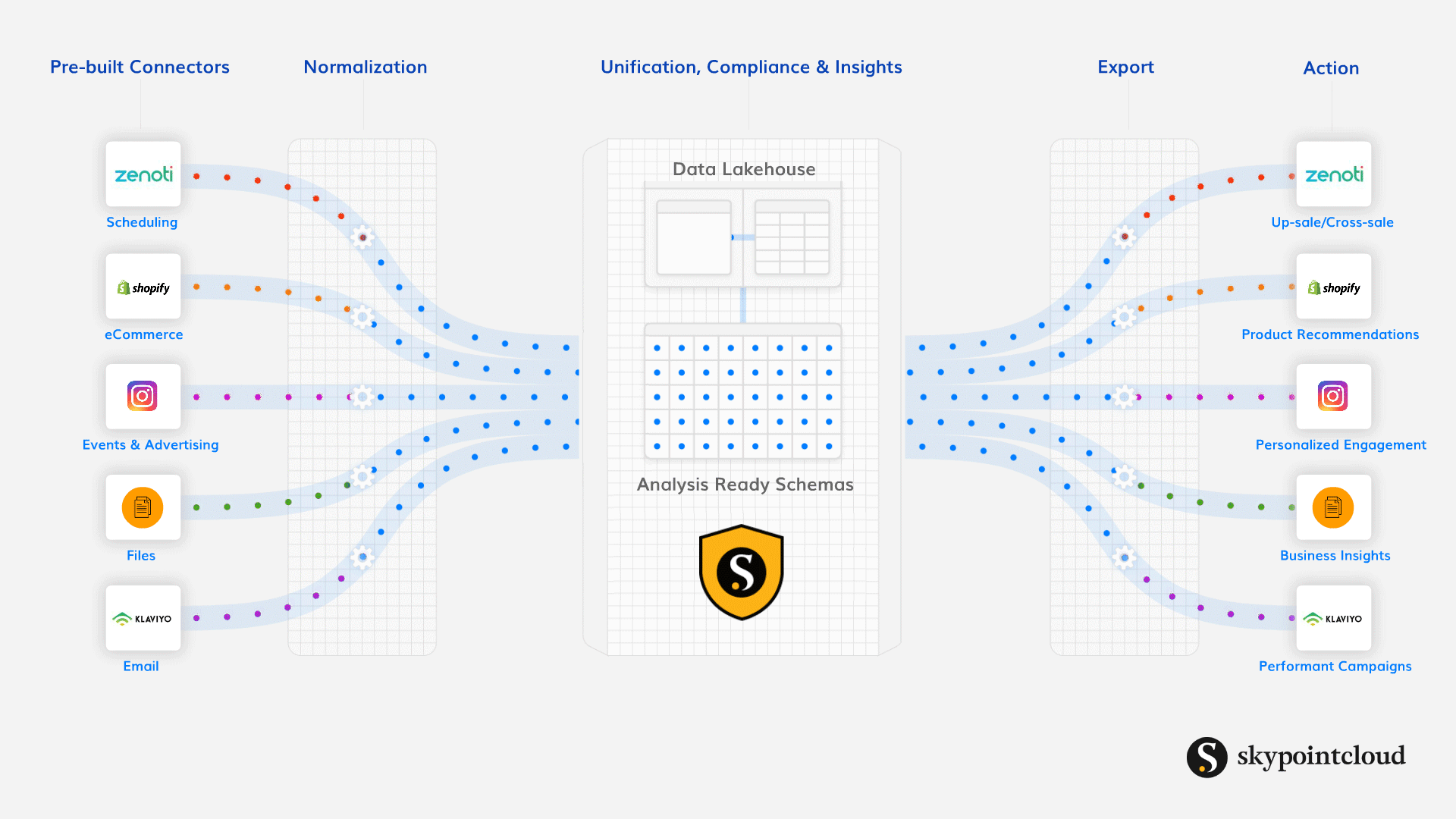Skypoint’s CDP sits at the intersection of composable and unbundled, to provide the best of both worlds.
It’s an architectural paradigm — the platform is unbundled, meaning it has a decoupled Data warehouse / Lakehouse and it’s “composable” with other tools like Dbt, fivetran etc.
With a traditional CDP, the data warehouse is a separate entity from the CDP itself. Batch data moves through the ETL (Extract Transform Load) process to the data warehouse, while event data goes into the CDP.
In this situation, the CDP is completely separate from the data warehouse. This means that analyzing data outside of the CDP environment is fractured and creates yet another data silo.
With an unbundled CDP, the data warehouse or data lake serves as the center of the system and provides an easy-to-use interface to do data transformations under the covers for things like audience segmentation, metrics, and exporting lists to campaign tools like Mailchimp or Klaviyo.
From there, your organization doesn’t need to do extra gymnastics to properly analyze your data and implement marketing changes based on the insights collected.
By unbundling the CDP, you maintain the ability to analyze your data where and when you need it while also providing Marketing team-friendly capabilities you know and love from a traditional CDP. You also get more flexibility and control over your data, which is invaluable as your organization grows and develops.
In simple terms, the real value here is that you’re gaining a strong data foundation so you’re set up to solve a vast array of business needs. Read our blog post


